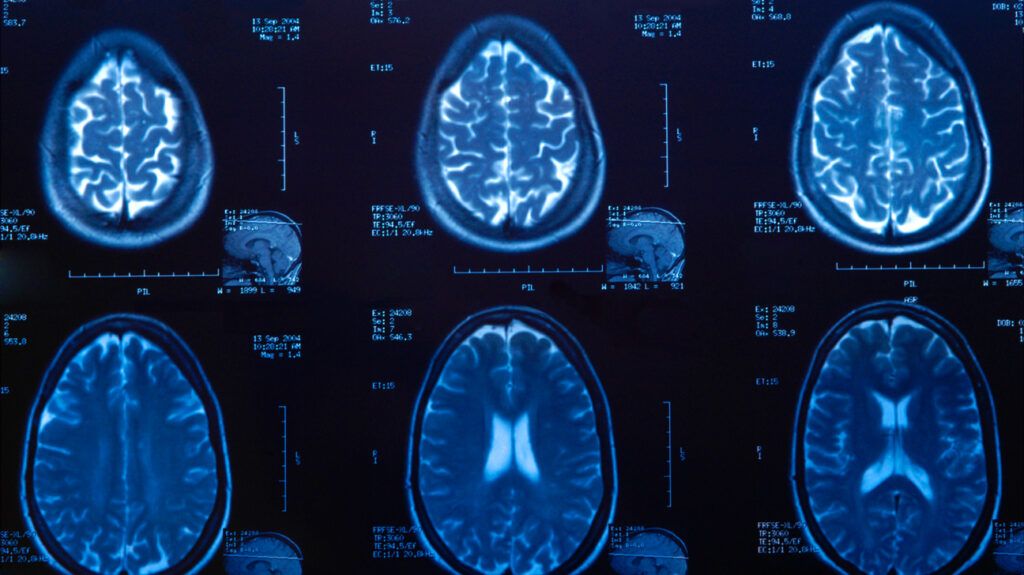Doctors may use magnetic resonance imaging (MRI) scans to help detect structural changes in the brain. These might show changes consistent with certain neurological diseases, but they cannot rule in or rule out Parkinson’s disease.
There is no set test to diagnose Parkinson’s disease, but doctors will assess symptoms and may use brain imaging tests, such as MRI, to rule out similar conditions.
MRI is an imaging test that creates a scan of the brain to examine structural changes. This can help doctors detect any changes in the brain that may suggest a person has neurological diseases, but not specifically Parkinson’s disease.
This article looks at whether MRI can help diagnose Parkinson’s, what findings may mean, and what other tests a doctor may use to diagnose Parkinson’s.

An MRI scan can help show changes in the structure of the brain that can indicate neurological diseases, but it cannot diagnose Parkinson’s disease specifically.
Parkinson’s disease differs from atypical Parkinsonism, which is a group of separate conditions that cause some of the same symptoms as Parkinson’s disease but also involve other symptoms. Research shows there may be subtle tissue changes in the brain that can be detected with specific MRI technique methods, although these methods are not used in clinical practice.
A
According to another 2020 article about the potential use of MRI as a biomarker in Parkinson’s disease, doctors can sometimes see evidence of changes associated with multisystem atrophy with a brain MRI scan. However, atypical Parkinsonism is a different condition from Parkinson’s disease.
Learn more about head and brain MRI scans.
A doctor may use MRI scans to confirm a diagnosis if they consider it a possibility a person might have a stroke, infection, tumor, or other condition that can cause symptoms similar to those of Parkinson’s disease.
The first step to diagnosing Parkinson’s is a thorough assessment of a person’s medical history and symptoms. A doctor may then use brain imaging tools, such as an MRI, to assist their diagnosis.
Brain imaging is not a routine practice in diagnosing Parkinson’s disease, particularly if a person has symptoms that are highly likely to indicate Parkinson’s.
An MRI may help a doctor if the diagnosis is unclear. An MRI scan can help doctors see changes in the brain that can cause movement symptoms, such as evidence of multisystem atrophy, stroke, or a brain tumor.
Brain MRI is a necessary part of testing necessary before Parkinson’s disease surgery.
The first step a doctor will take to diagnose Parkinson’s is to assess symptoms. To do this, they will take a full medical history, and they may carry out a range of examinations on a person, such as:
- measuring their blood pressure while sitting and standing
- assessing their cognitive skills
- examining facial expressions
- checking for tremors in the face, hands, or limbs
- checking for stiffness in the limbs, torso, or shoulders
- assessing their ability to stand up from sitting on a chair
- examining their gait and balance
Learn more about tremors in Parkinson’s disease.
If a person presents with two or more symptoms of Parkinson’s, including tremors, rigidity, or slowed movement, a doctor may consider a Parkinson’s diagnosis.
For some people, an assessment of symptoms may be enough to diagnose Parkinson’s. A doctor may also use brain imaging scans to rule out other possible conditions.
A dopamine transporter scan (DaTscan) is an imaging test that allows doctors to see how the dopamine system works in the brain. A DaTscan works similarly to an MRI, but instead of showing brain structure, it shows brain function.
A DaTscan may help doctors diagnose Parkinson’s disease, as it can show if there is a decrease in the function of the dopamine system in parts of the brain that relate to movement.
Although a negative DaTscan does not definitively rule out Parkinson’s, a positive DaTscan can help doctors confirm a diagnosis. However, a positive result does not clearly diagnose Parkinson’s disease versus other forms of atypical Parkinsonism.
If a doctor suspects a Parkinson’s diagnosis, they may prescribe Parkinson’s medications to see if there is a response.
Most people who have Parkinson’s disease experience an improvement of most of their symptoms with Parkinson’s medication, while people who have atypical Parkinsonism can get some relief from some of their symptoms with Parkinson’s medication. These medications do not reduce movement symptoms due to a stroke, infection, or tumor, though.
Learn about other diagnostic tests for Parkinson’s.
A doctor may use an MRI scan to rule out similar conditions when examining for Parkinson’s disease, but an MRI scan cannot diagnose the condition alone.
Doctors instead use a wide range of diagnostic tests to investigate Parkinson’s disease, including a person’s blood pressure measurements and cognitive tests. Doctors may also check for tremors, certain facial expressions, and gait, balance, and body stiffness.
